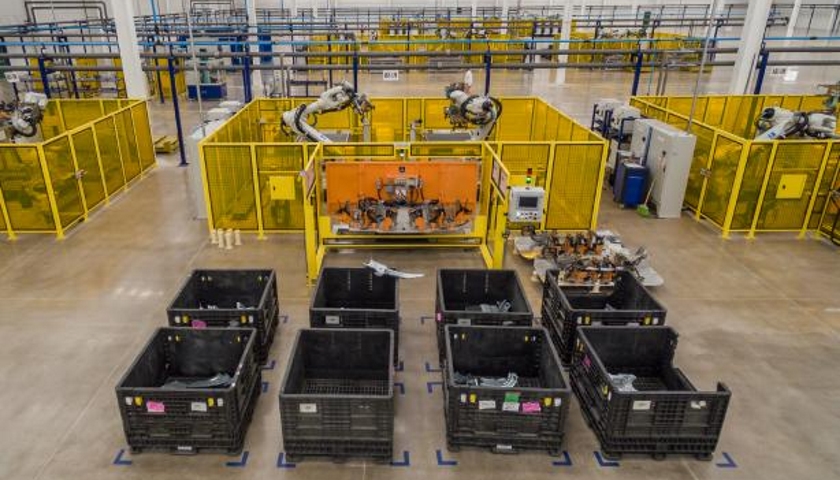Allgaier is a global supplier for the automotive industry and delivers metal parts to all well-known car manufacturers. Allgaier de Puebla processes more than 80,000 tons of steel and aluminum. Compared to this, 80,000 tons of steel are needed to build the currently tallest building in the world, the Kingdom Tower, with a height of more than 3,300ft.
A coordinated logistics concept at Allgaier guarantees constant readiness for delivery and just-in-time supply of components to the assembly lines of globally operating companies in the automotive industry.
The Mexican plants of Allgaier in Puebla and Aguascalientes produce stamped parts that are assembled into components for car bodies in complex automatic welding processes. Employees produce up to seven different part numbers in a cell at the same time.
“MPDV has local teams deployed on several continents. This makes MPDV the perfect partner for us as a global manufacturing company, because we always have a contact person at our side,” says Patrick Wolf, global HYDRA project manager and local IT manager at Allgaier in Puebla.
MES HYDRA at Allgaier
Until recently, Allgaier used only one ERP system at its plants in Puebla and at the new factory in Aguascalientes, Mexico. There was no transparency on the shop floor. Allgaier introduced MPDV’s Manufacturing Execution System (MES) HYDRA in order to bring the two plants in Mexico in line with the latest technology and to be able to plan realistically using real-time data. While production employees used to write information down by hand, there are now touch-screen monitors that show exactly which machine is producing what and how much. “Since we have introduced HYDRA, we know exactly what happens on the shop floor. Everything is transparent and thus we can detect and solve problems much earlier. We can also optimize continuously our processes using real-time data,” says Ricardo Velasco Pelaez, MES Application Manager at Allgaier in Mexico.
With the HYDRA shop floor scheduling tool, planners at Allgaier have a 360° view of all the resources they need. The shop floor scheduling tools enables realistic detailed planning based on machine and shop floor data collected in real time. This enables us to react much more quickly to changed delivery dates and make the best use of our production resources”, Velasco Pelaez adds.
Allgaier’s machinery includes many older systems as well as those from different manufacturers. Fortunately, both modern machines and older systems can be easily connected to the MES HYDRA. MPDV’s local implementation team in North America used the OPC UA protocol. OPC UA stands for Open Platform Communications Unified Architecture and enables interoperability between systems from different manufacturers. The transport of data as well as interfaces and security mechanisms can then be specified with OPC UA. The MPDV team connected 56 machines to HYDRA at Allgaier’s sites.
“The initial skepticism of the employees towards the system changed into enthusiasm. How did we achieve this? We included all participants at an early stage, communicated openly and demonstrated the advantages of the solution. We also gradually introduced the employees to working with the system and thus took away their fear of technology,” says Patrick Wolf, global HYDRA project manager and local IT manager at Allgaier in Puebla.
Currently, the HYDRA module Material and Production Logistics (HYDRA MPL) is being introduced. The solution is used to control material flow and monitor material stocks in production.
Plans are in place for the future to introduce the MES HYDRA at other Allgaier sites worldwide. “With MPDV, we have a partner at our side who supports us in this task all over the world,” says Wolf.
HYDRA at work
• Interface to the ERP system Epicor.
• 56 machines are connected at their site in Puebla.
• Availability has increased by 20% in the press plant.





